Choosing Goggles: Where to Start
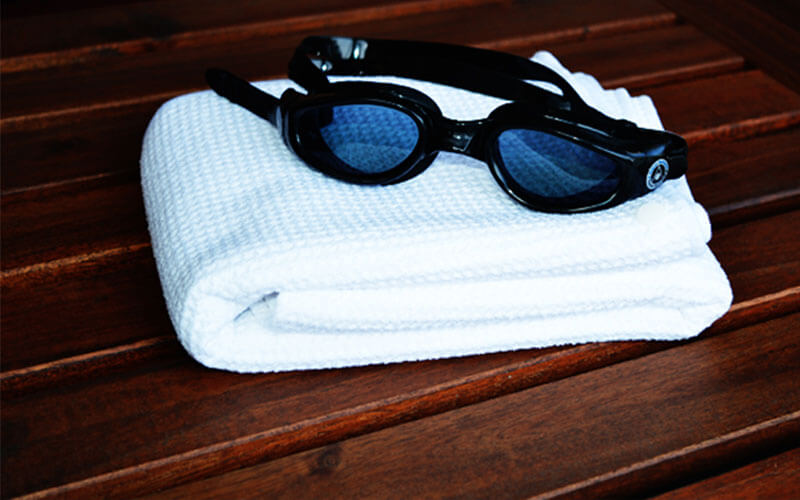
By Joe Buchanan, Swimming World College Intern.
Choosing goggles can be intimidating for any new swimmer. Many swimmers settle for whatever goggles they can find within their price range at their local sports store without doing any research into what would work best for them.
While all swimming goggles do the same thing, keep water out of your eyes, different types of goggles have different types of bulkiness, visibility, and durability. By choosing the right type of goggles, swimmers can become more effective during their time in the water.
There are five different types of goggles available to swimmers; competitive, practice, recreational, masks, and Swedish.
Competitive:
The competitive goggles are slim, low profile goggles. They often have low peripheral vision, but most feature mirrored tint on the lenses to purvey a psychological advantage. The nose bridge is replaceable, there are rubber gaskets along the lenses, and the straps are adjustable. These goggles are the least comfortable and durable, however, they provide the least amount of drag, meaning swimmers move faster through the water. Because of this, they are usually reserved exclusively for competition.
Examples of these types of goggles are Speedo’s Fastskin3 Elite
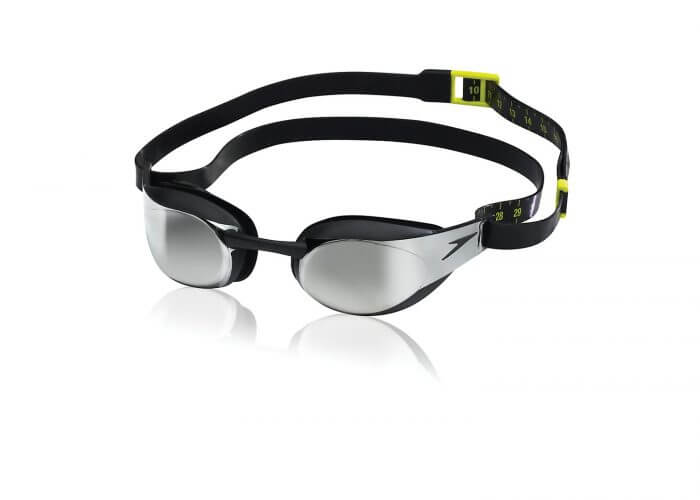
Photo Courtesy: SpeedoUSA
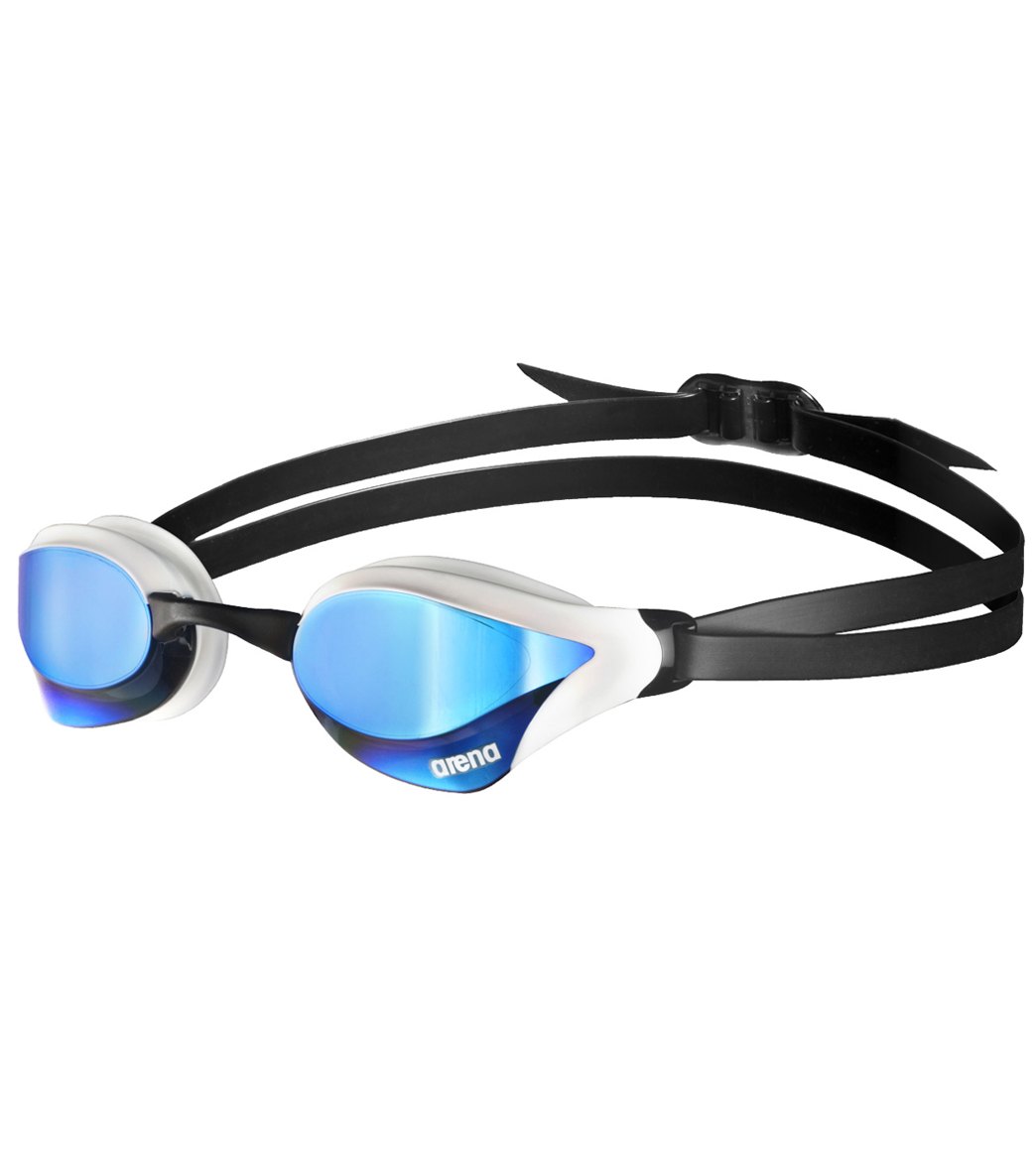
Photo Courtesy: SwimOutlet
LINKS TO SPEEDO, ARENA, DOLFIN, FINIS, & TYR Competition Goggles
Practice:
The practice goggles are slightly bulkier than competitive goggles, yet are still relatively low profile. While they provide more drag than competitive goggles, they are also more comfortable and durable, making them perfect for consistent daily usage. They offer a replaceable nose bridge, rubber gaskets on the lenses, and adjustable straps. These goggles are built to survive through the toughest practice schedules.
Examples of these types of goggles include Dolfin’s Charger
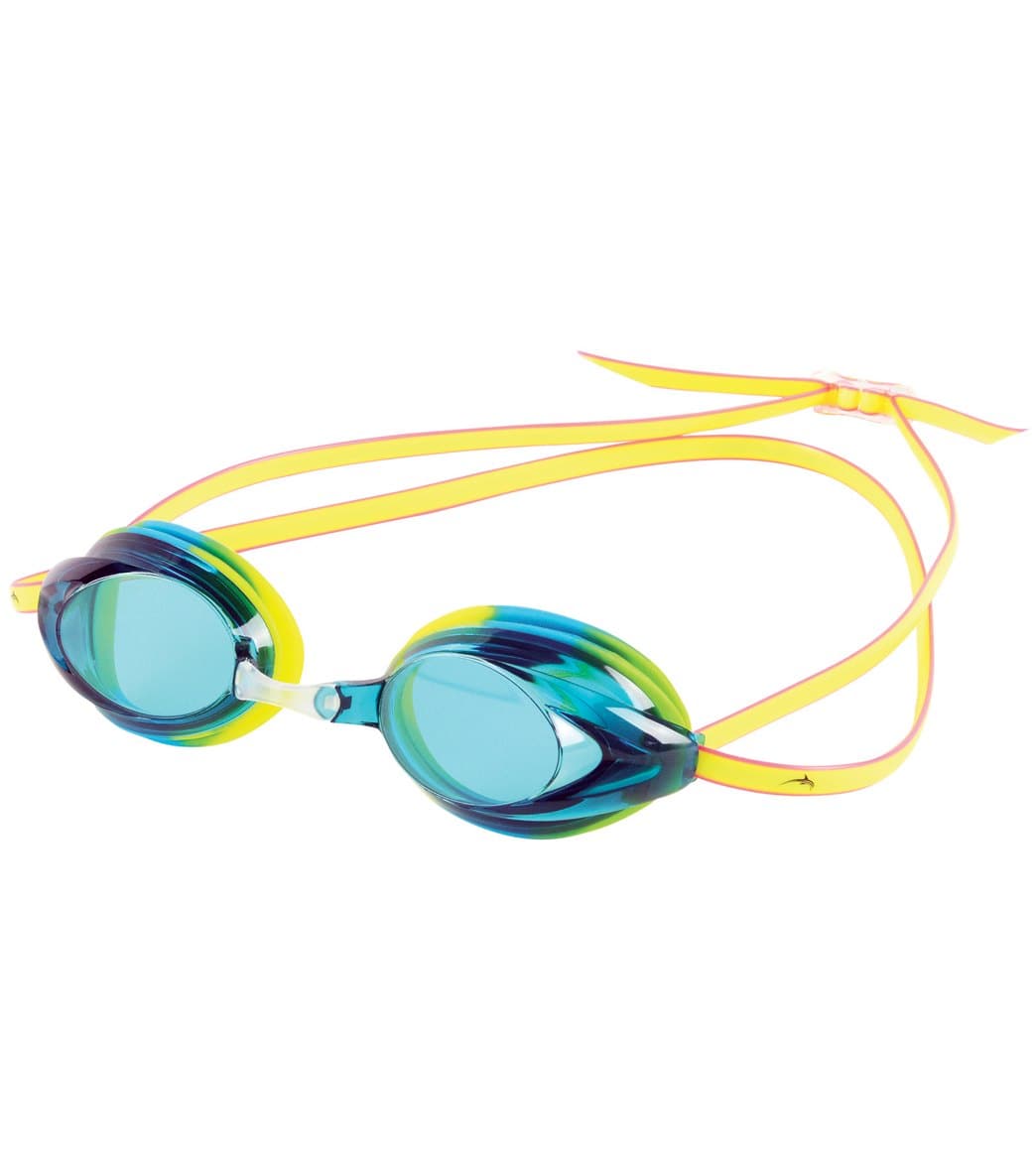
Photo Courtesy: SwimOutlet
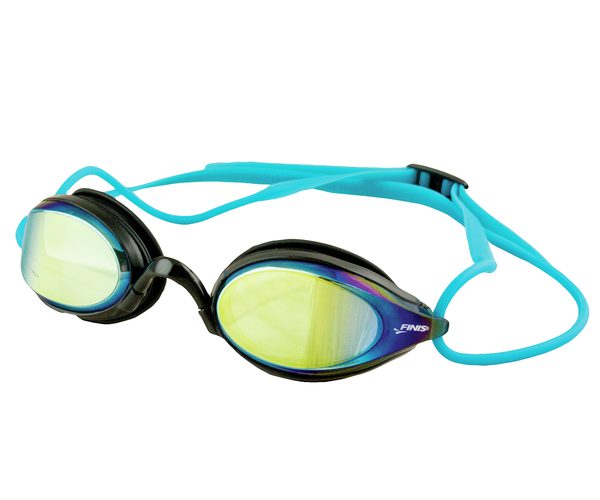
Photo Courtesy: Finis
LINKS TO SPEEDO, ARENA, DOLFIN, FINIS, & TYR Practice Goggles
Recreational:
The recreational goggles are much bulkier than practice goggles. They provide much more drag, but are the most comfortable of any of the goggles discussed before. They usually involve a large flat lens surrounded by durable silicon rubber or plastic. These goggles have adjustable thick rubber straps, and have rubber gaskets along the lenses, making them less prone to slipping on the swimmer’s face. These goggles offer wide peripheral vision, very durable designs, and often have anti-glare coating making them ideal for open water or triathlon swimming.
Examples of these types of goggles include Finis’ Surge
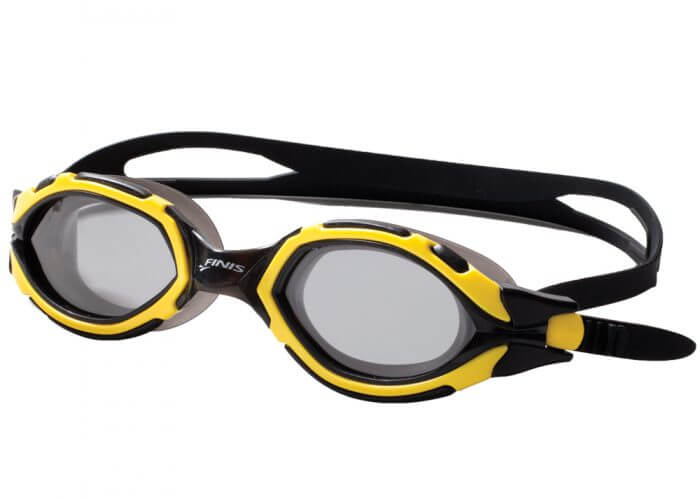
Photo Courtesy: Finis
and Tyr’s Nest Pro
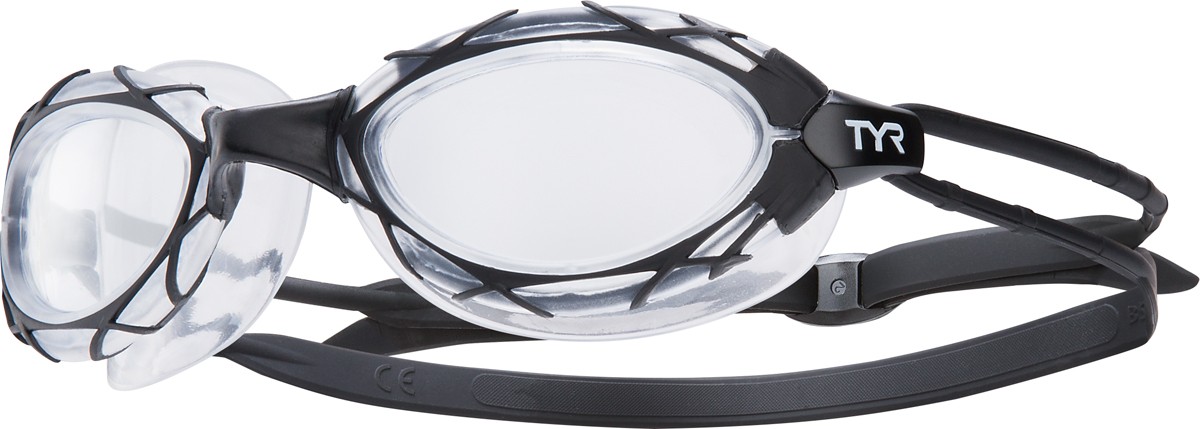
Photo Courtesy: TYR
LINKS TO SPEEDO, ARENA, DOLFIN, FINIS, & TYR Recreational Goggles
Masks:
The swim masks are the bulkiest goggles on the market and as such aren’t ideal for training. They often take up most of the swimmer’s face and provide the strongest seal of any types of goggles. The wide lenses offer near-complete vision around the swimmer. As such, these masks are perfect for expeditionary swimming such as snorkeling or diving. Lower-profile masks are also used by open water swimmers who prefer the extra visibility for their longer swims.
Examples of these types of masks include Speedo’s Oculus Prime
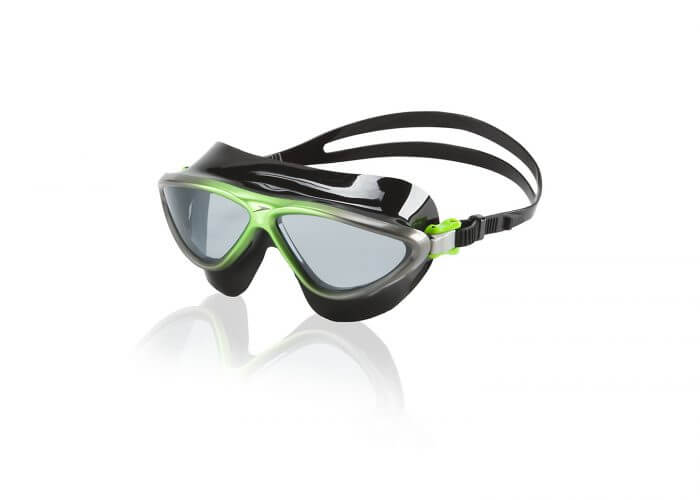
Photo Courtesy: SpeedoUSA
or Tyr’s Magna

Photo Courtesy: TYR
LINKS TO SPEEDO, ARENA, DOLFIN, FINIS, & TYR Masks
Swedish:
The Swedish goggles are the smallest goggles on the market and provide the most visibility of any type. They are very similar to competitive goggles, but feature less frills. They have no rubber gasket along the lenses and as such, the clear plastic sits flush on the swimmer’s face, making them more prone to slip. These goggles are worn and loved by many swimmers at every level, but swimmers must first put in the time and effort to assemble the goggles and adjust the fit to their face.
Examples of these types of goggles include Arena’s Swedix
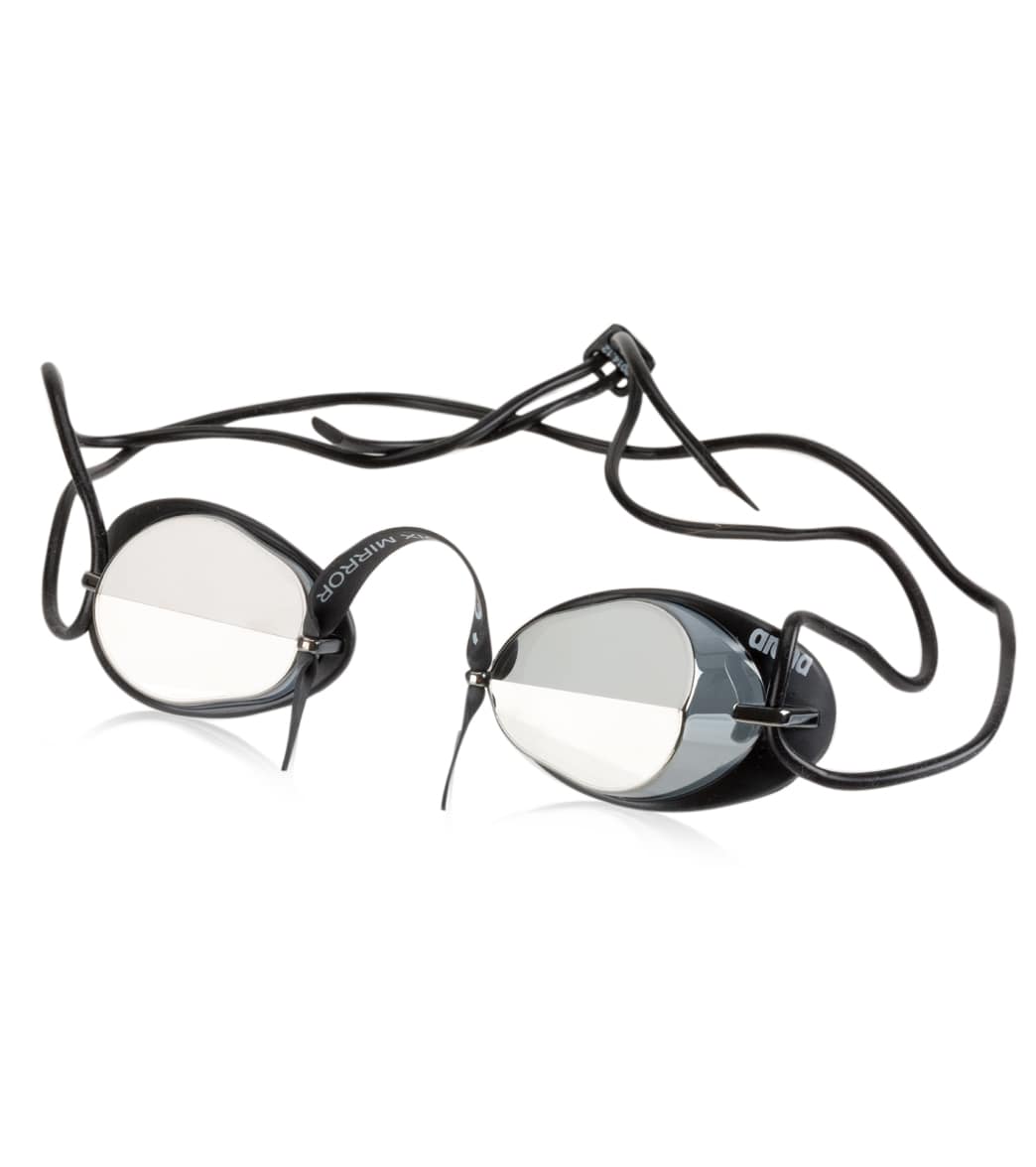
Photo Courtesy: Arena

Photo Courtesy: Amazon
LINKS TO SPEEDO, ARENA, DOLFIN, FINIS, & TYR Masks
The tint that goggles have also make a difference.
No Tint: used in low light environments to naturally increase visibility,
Blue Tint: often used in swimming pools and open water to increase visibility,
Lighter Colored Tint (Yellow, Orange, Amber): used to make brighten up low light environments,
Mirror Tint: Used as an anti-glare tint or to give swimmers a psychological advantage in races.
All commentaries are the opinion of the author and do not necessarily reflect the views of Swimming World Magazine nor its staff.




Is it really that tough to choose? If you are just starting out, just avoid the ones with adjustable plastic nose pieces that cut into your nose. Silicone goggles like Speedo Biofuse/Futura (available for juniors) or Zoggs are great for long practice sessions, and swimmers can worry about better racing goggles when they are competing regularly.
Sweedish googles are the best for me. However they aren’t appropriate for those who don’t like small glasses.
So you mean that brilliant Speedo Fastskin Elite or Arena Cobra are less comfortable and durable than those huge amateur goggles without even a customizable nose bridge?! Wow. Excuse me but this sounds like bulls**t 🙂 Have tested them all and pretty sure that modern racing goggles are the best in all ways including comfort, customization and durability. That’s why most elite swimmers train in the same goggles they use for competition.
I use Arena Cobra Ultra for training and competition. I think they are the best, but have to be tight or the arms can push the goggle off the eye and cause leaks. I like Speedo Speedsockets too, but they did cut into the bridge of my nose a bit. I don’t think I’d go back to training in anything else now, but those one piece silicone goggles are great for beginners, and are very comfortable too. Masks – just no! Swedish – never got on with them due to lack of suction.
Really need better choices for the swimmers that need prescription goggles.
Speedo Vanquisher optical–they’re only $3.00 more than the regular vanquishers (I have both so prescription or non depending on whether or not I have contacts in).
My son doesn’t like the Vanquisher goggles fit.
Two words–Speedo Vanquisher